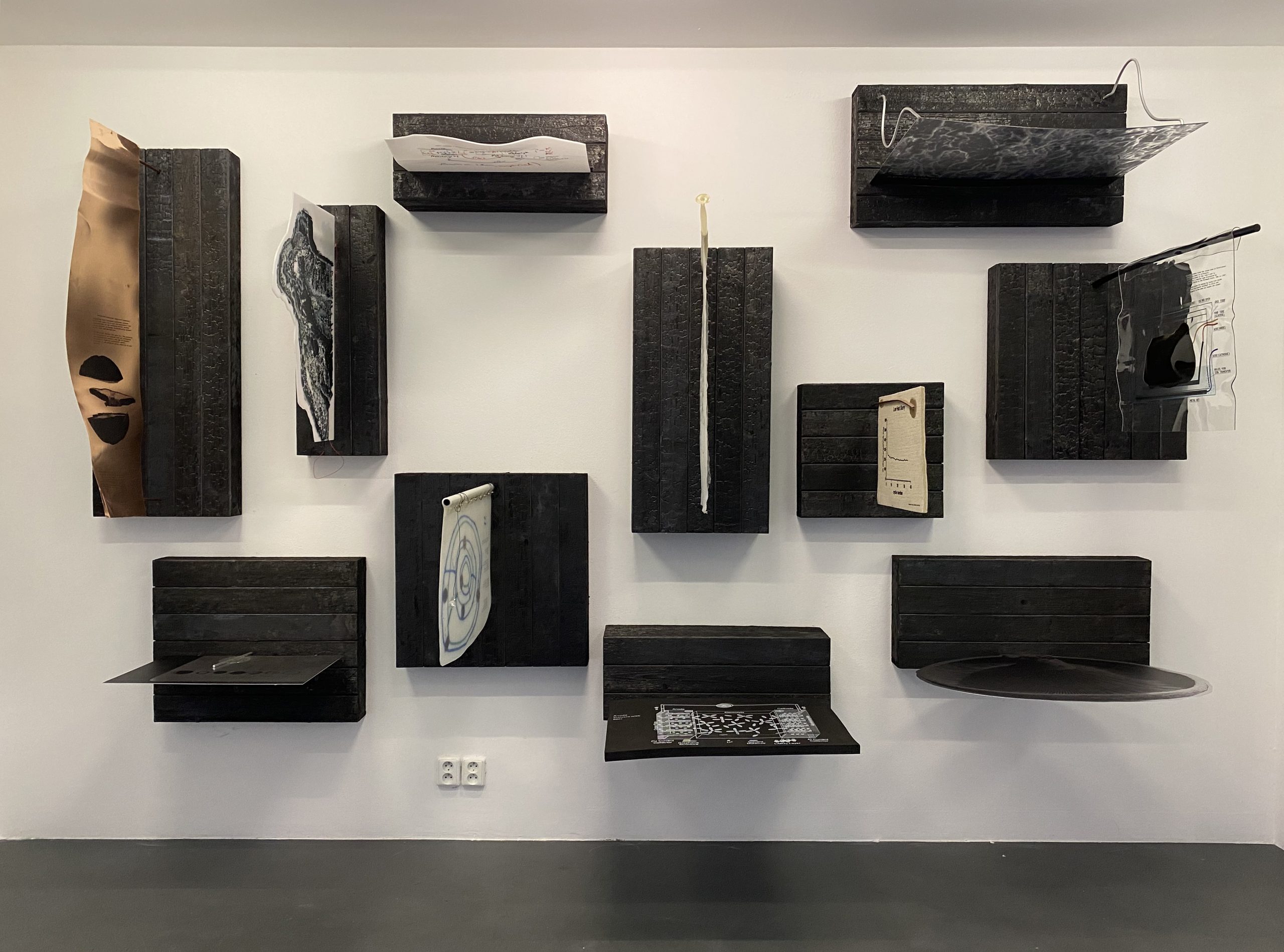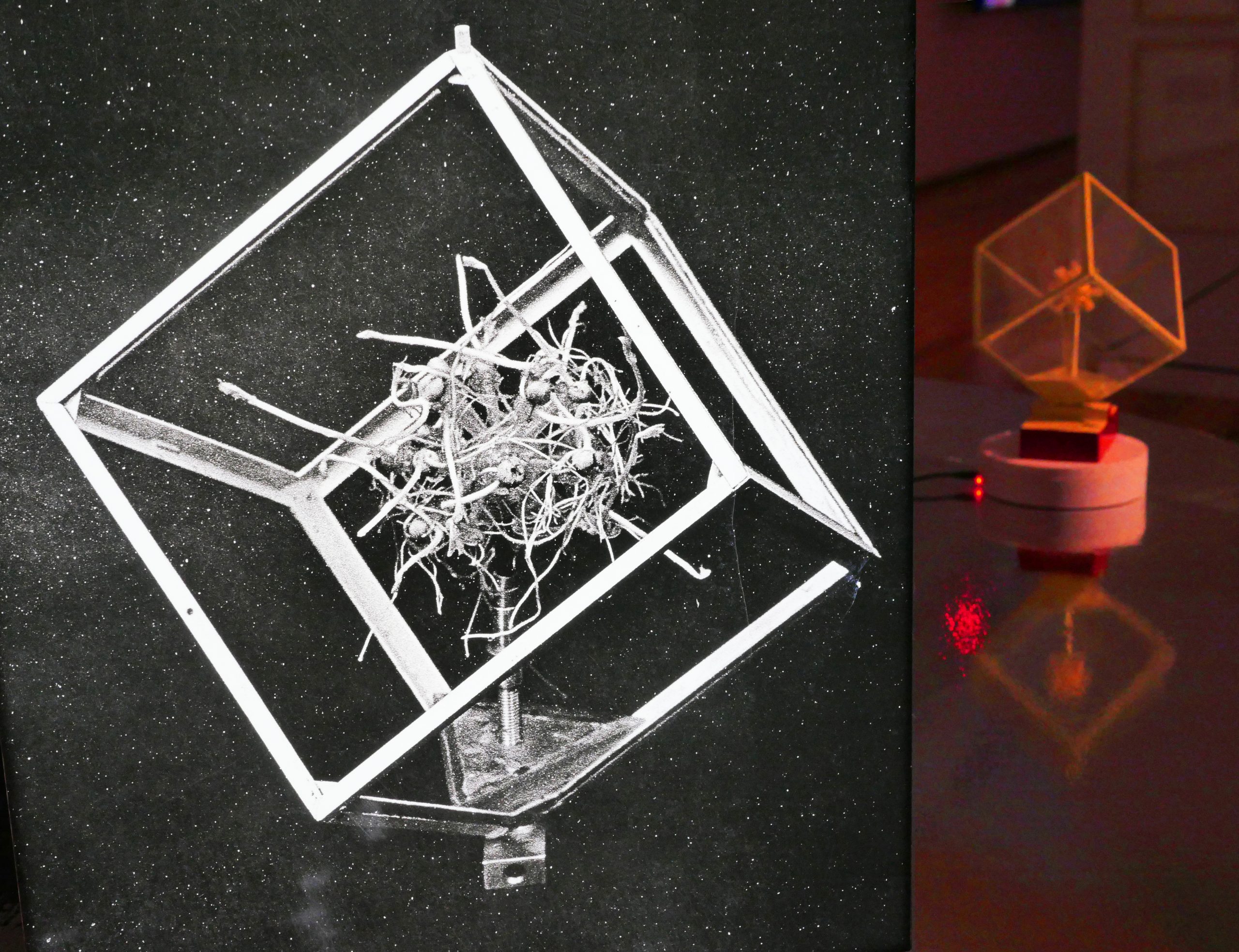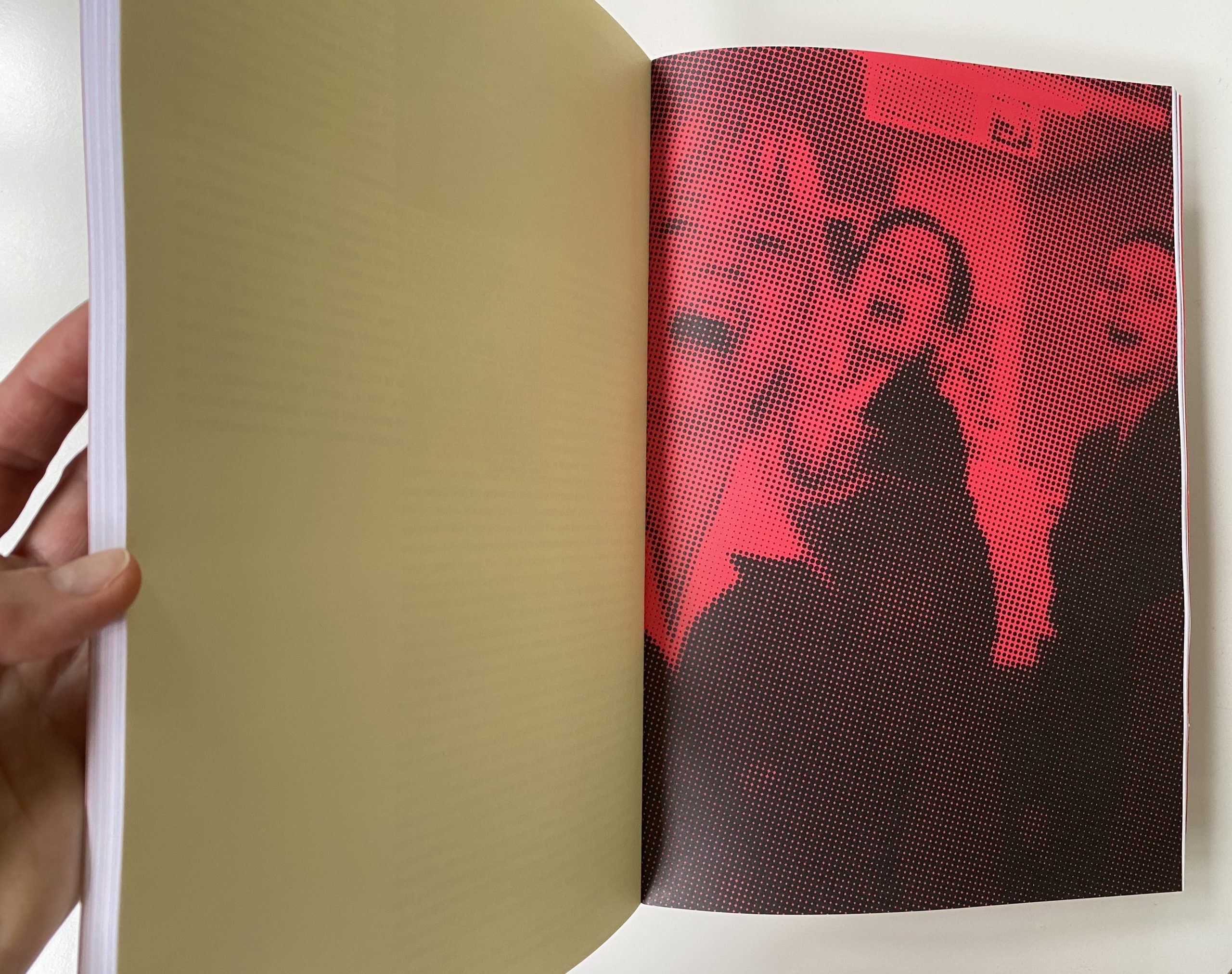Swamp Crevasse, Bio-Cybernetic Brain, Mushroom Power Plant, Swamp Reference Library, all meet as swamping figures in the Swamp Intelligence exhibition, curated by Lýdia Pribišová at Tranzit.sk space in Bratislava, to unfold our interest in swamp as the interface to Gaia.
The figures through which we look into the world offer biological, digital, technological, historical and cultural facets of the swamp. Three thousand years old peat from the first scientifically researched swamp meets phantoms embodying hundreds of years of demonisation of the swamps moderns created as a way to deal with the uncanny, the unknown, the queer, the uncertain and the unstable.
Concept: Nomeda & Gediminas Urbonas
Architecture: Indrė Umbrasaitė
Research team: Nikola Bojić, Kristupas Sabolius
Programming: Thomas Sanchez Lengeling, Jonas Kubilius
Graphic design: Gailė Pranckūnaitė, Serge Rompza
Scientific advisors: Vesta Aleknavičiūtė, Jūratė Sendžikaitė
Supported by: Lithuanian Council for Culture, Durpeta UAB
Special thanks to: Gintaras Rapkauskas and Sigita Kantautienė / Durpeta UAB
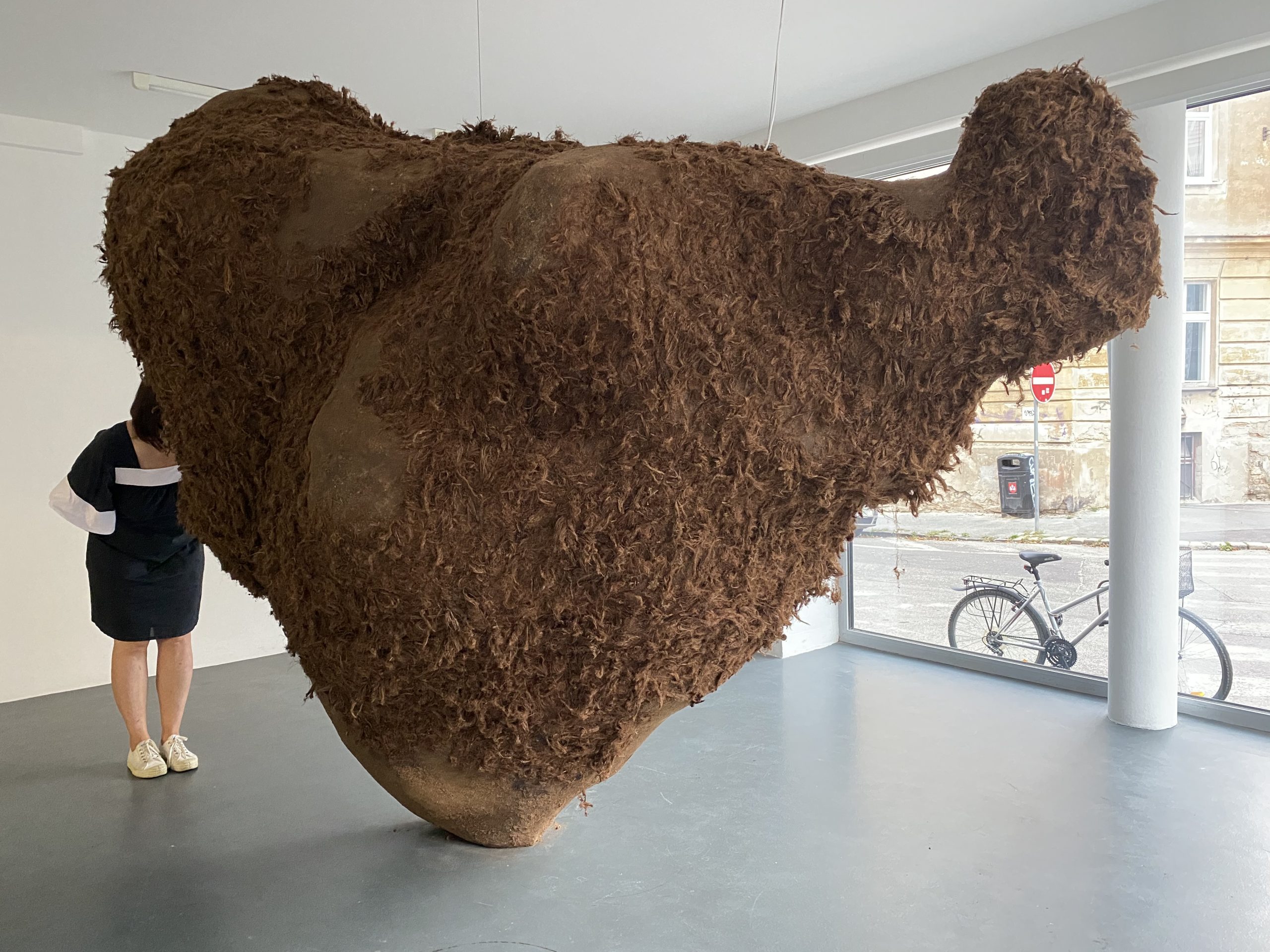
The Swamp Intelligence Crevasse, created in collaboration with artificial intelligence scientist Jonas Kubilius (Three Thirds, Lithuania) is a hybrid (self)rendered by the swamp and a machine.
It is based on a NoPlace Neural Network (NNN), a variant of a conditional AI (Artificial Intelligence), used to unveil neural network abilities to generate novel visual imagery. The NNN has two components that work in opposition: a generator that is learning how to generate an image from a noise pattern and a discriminator that tries to guess which image is real and which is generated. The NNN works to find ways to organically combine its architectural proposals into existing landscapes. Being based on foundations of strict logic and lacking context, the machine quite paradoxically becomes less restricted to imagine than the artist who sets it up, producing rather unsettling imagery for an observer to interpret.

Swamp is a figure of holobiontic relationships between the species and their roles in a production of sympoietic cycles, including flows of energy from physical to metaphysical. The Biotope Model, created in collaboration with biologists Vesta Aleknavičiūtė and Jūratė Sendžikaitė, and processing programmer Thomas Sanchez Lengeling (MIT Media Lab), renders an animated map in flux of the relationships in the living community of Aukštumala swamp, where every member is part of every other member’s environment, as well as necessary for the survival of the whole.

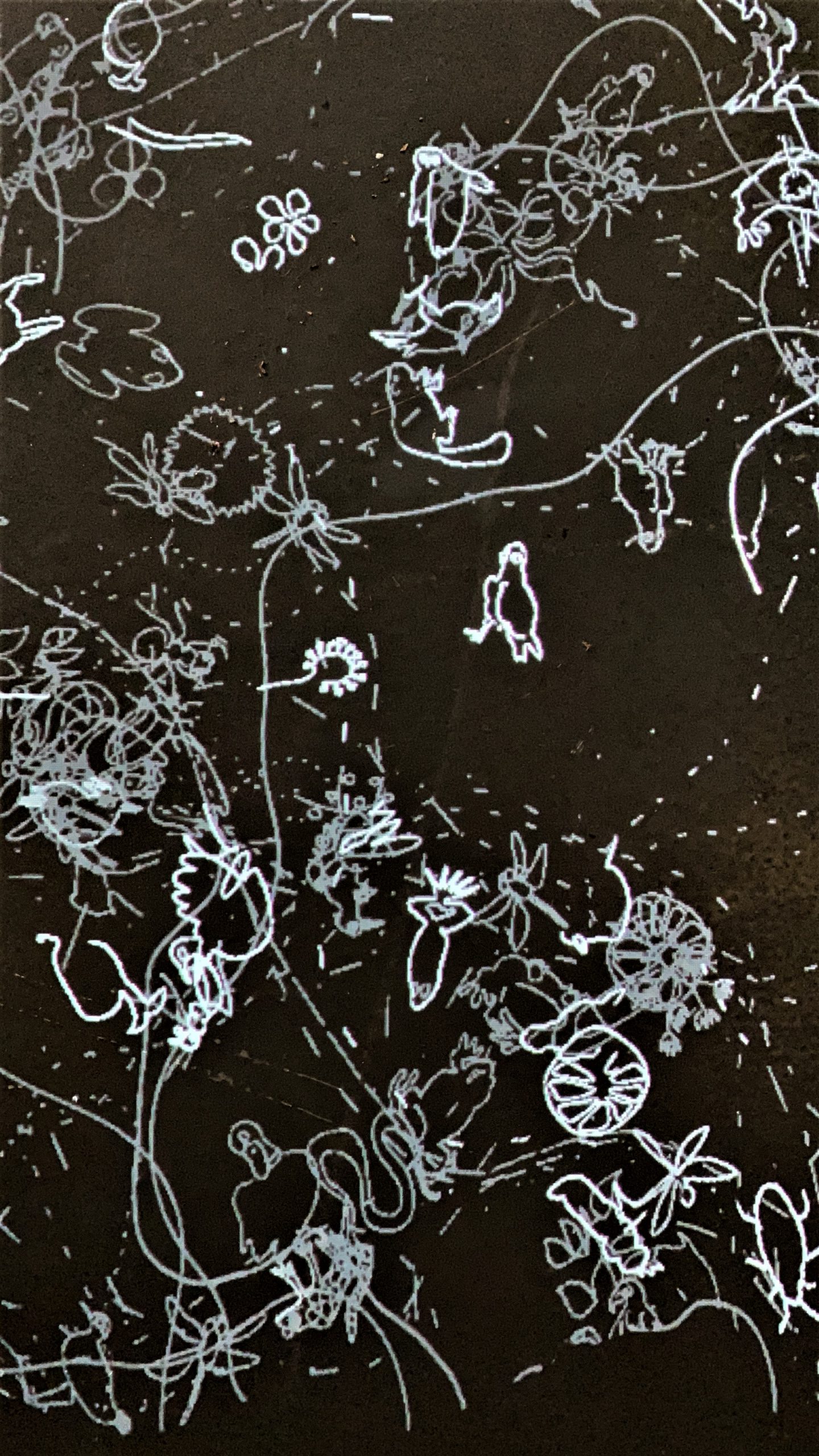

The Swamp Reference Library of 278 images, designed in collaboration with Gailė Pranckūnaitė, presents how the uncanny of swamp is widely reflected in films, literature and popular culture.
Throughout history, moderns produced their environment by draining swamps, marshes, and wetlands. Dividing the land into liquid and solid, butchering the territory for agriculture, waterways, and settlements, extracting and parceling it by expelling the indigenous—all are technologies of moderns and colonization.
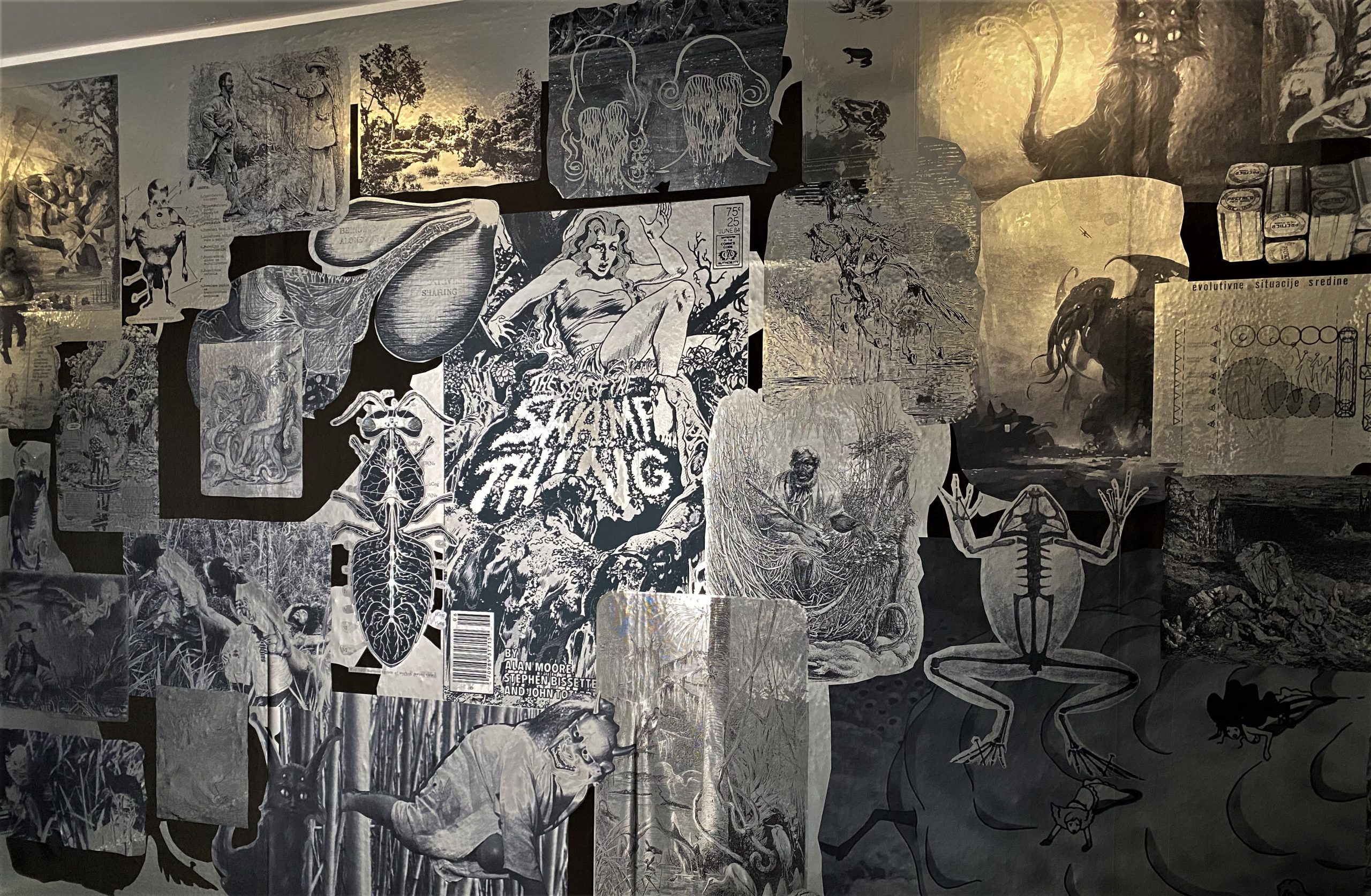


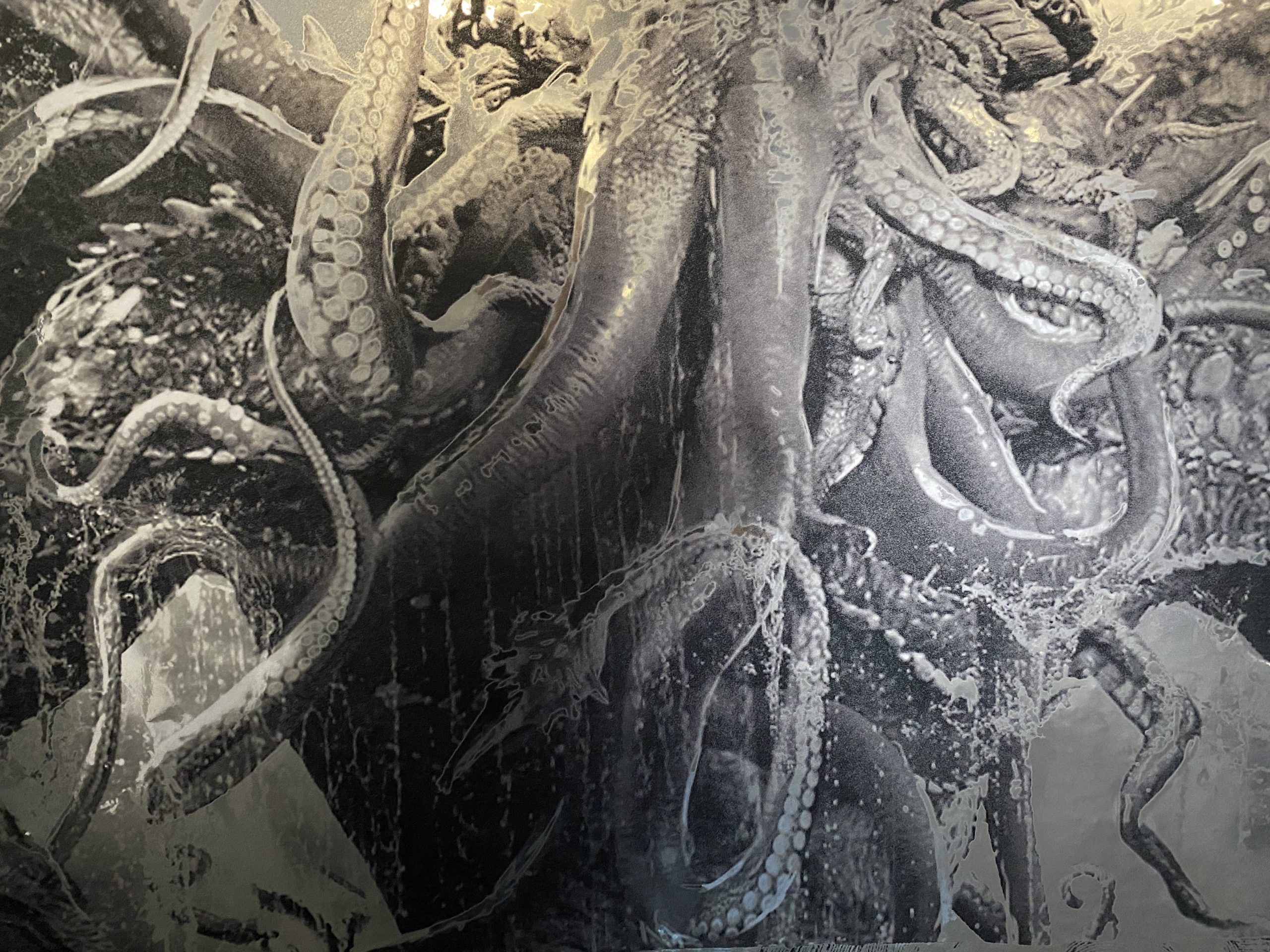
In 1902 German botanist Carl Albert Weber conducted a world‘s First Scientific Study of Swamps. From the Imperial German observatory of swamps Weber travelled to East Prussia wetlands – present site of Aukštumala swamp in Lithuania – to study the swamps and build the Taxonomy of peat.
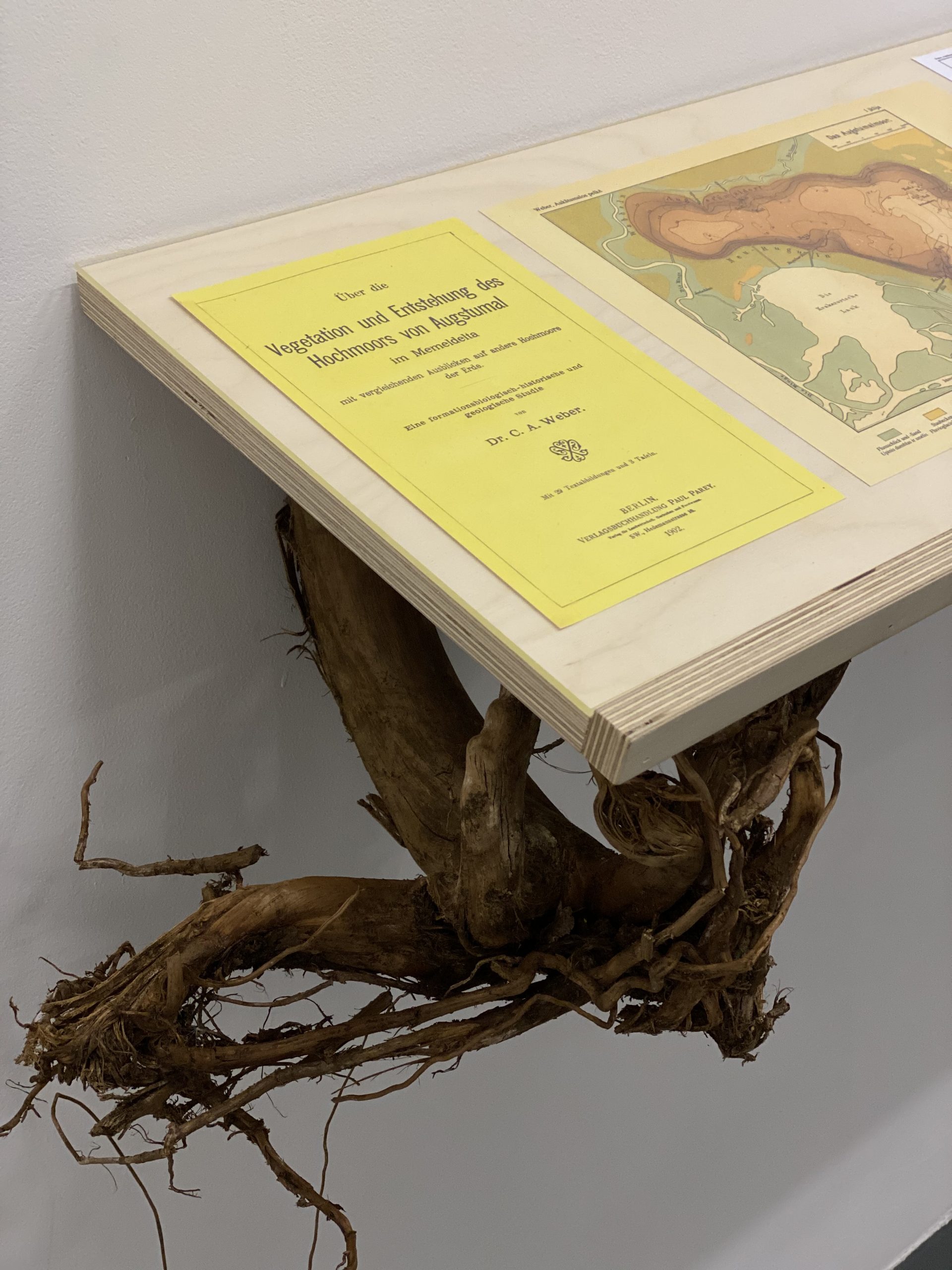

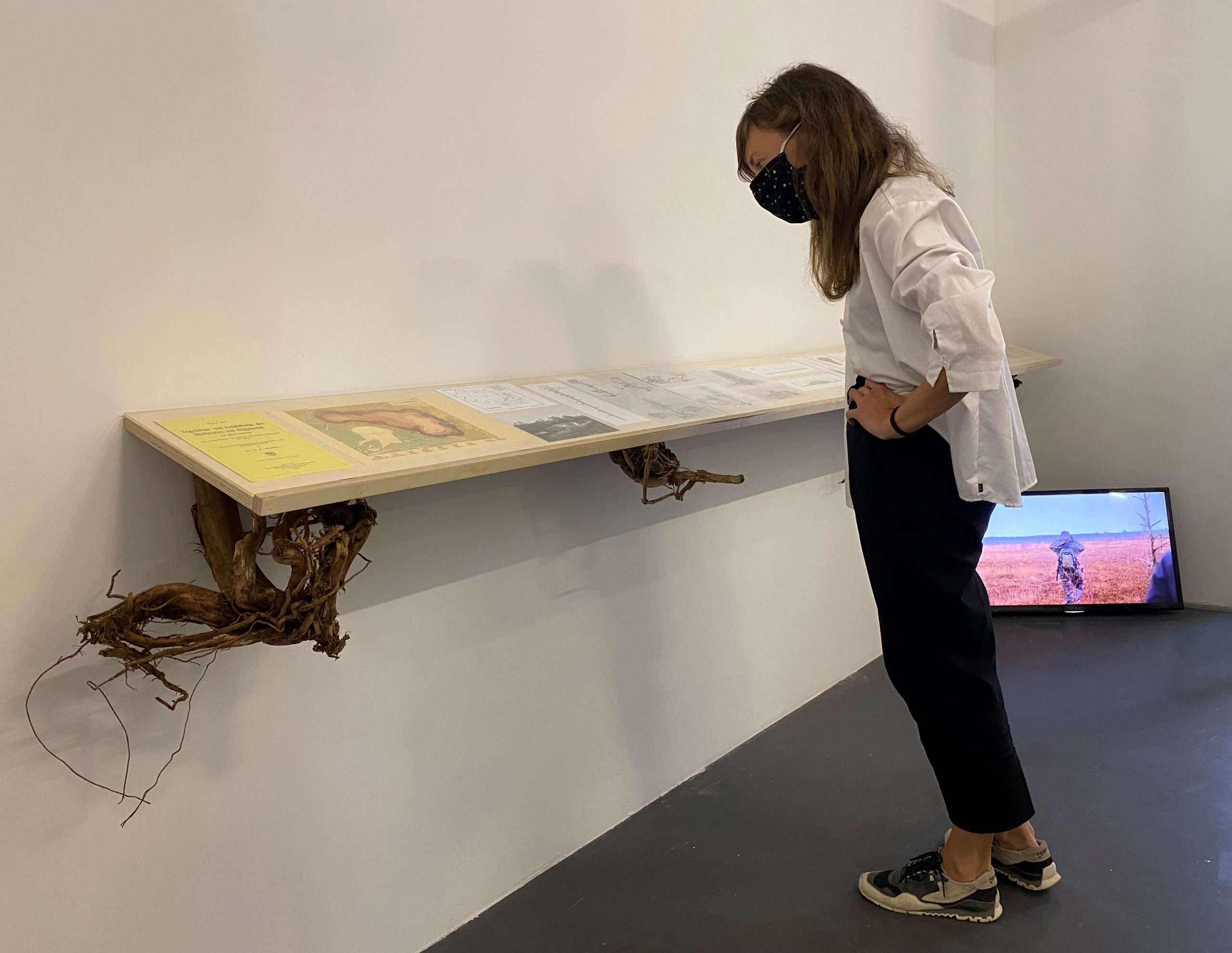
The Mushroom Power Plant is a mycoglomerate that catalyses the symbiotic relationship between mud bacteria and mushroom. It utilizes Geobacter bacteria found in swamps that gains its energy by using iron oxide (an abundant rust-like mineral in soils and sediments) in the same way humans use oxygen. A mud element is connected with the component of carbonized mushroom slurry that replaces the graphite typicaly used in conventional battery production.
